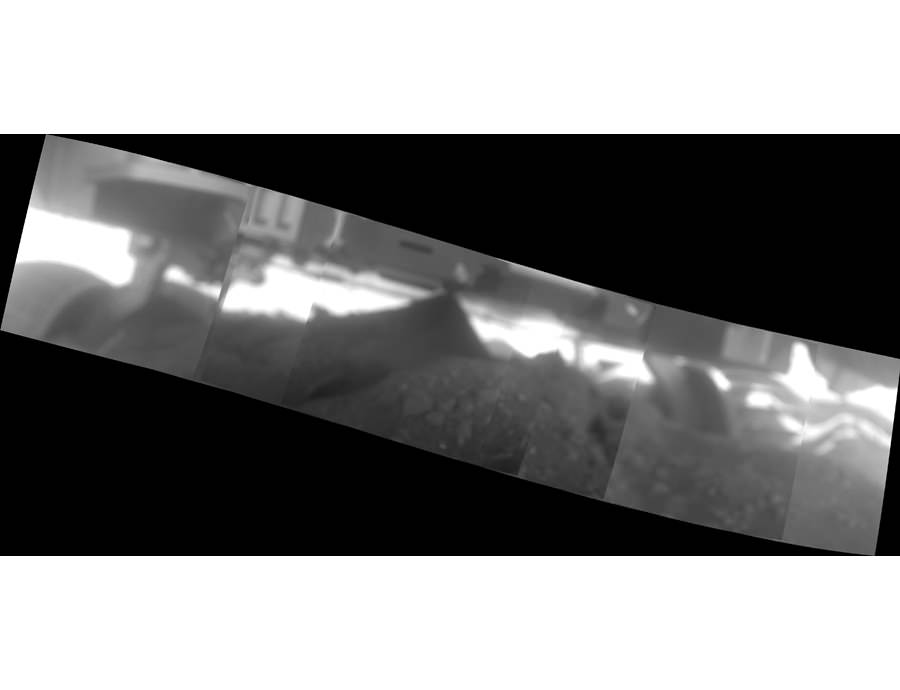[/caption] The Spirit rover has now taken two sets of close-up images showing the ground where it has been stuck for several weeks. Spirit used the microscopic imager on the robotic arm to peer underneath her own belly in an attempt to determine how the vehicle is embedded, and if there might be something obstructing the rover. Sure enough, the images appear to show a rock or mound of dirt that might be in the way, but more pictures and tests are needed before the rover team can develop a strategy for getting the rover out of its current predicament. Rover project manager John Callas said using the robotic arm for this purpose was never in the original design book, but it appears to have worked quite well.
Spirit is dug in over halfway up her wheels in soil that varies from one side of the rover to the other. The rover engineers and drivers have been worried that Spirit has dug herself down so deep that her belly might be sitting on rocks, and one wheel may be jammed by a rock.
The camera normally take close-up images of Martian rocks and soil. The technique for using it to look underneath the rover was tested on Spirit's twin, Opportunity, and it worked well. The first set of images are a little out of focus, but according to an article in
New Scientist,
Spirit took additional images on Tuesday which showed one possible obstruction, but it wasn't clear whether it was a rock or just a mound of dirt, and it also wasn't obvious if the object was hitting the rover's underside.
In an
article in Universe Today last week
, Callas said that even though this is one of the worst predicaments either rover has ever been in, he is optimistic about getting Spirit unstuck. "We saw that even on the last drive that the rover was still moving, even though it was only fractionally, based on the wheel spin. So, that tells us material is still being transported underneath the wheels. Given enough time and enough wheel spinning we should be able to get out. If that changes, if we get a situation where we have a hundred per cent slip, then we're in trouble. But we're not at that point yet, — even if we're at 99.9%, that makes a big difference between 100%."
And if this latest attempt doesn't work, Callas says they have some other ideas up their robotic arm sleeves. "There are some exotic things we would consider if the more traditional methods don't work," he said. We have a lot of arrows in our quiver, or tools in our toolbelt to try first. "
Sources:
New Scientist,
previous interview/article with John Callas
 Universe Today
Universe Today
